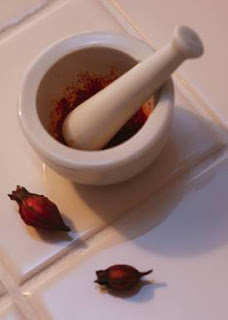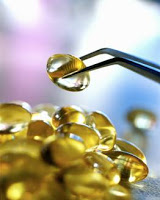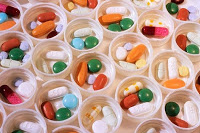Plate of Prevention: Should Your Food Be Treating You?

Scientists and researchers around the world are engaged in finding cures for disease. They are isolating components in food that could help prevent cancers and diseases of aging, they are engaged in clinic trials of pharmaceuticals, and they are studying the mechanisms of the body to discover how and why diseases occur to make strides toward prevention.
While this worthwhile research persists, the irony is that every day we can be part of treatment and prevention of disease. After all, we eat at least three times a day. Why wouldn’t we be using that opportunity to do what thousands of researchers are in their labs trying to do?
Since the late eighties we’ve heard the term “functional food” – food with health-promoting or disease-preventing property. More recently were introduced to the concept of superfoods – foods like blueberries with a particularly high concentration of phytonutrients. But we often think of those foods as isolated and special, categorized as such for their unique nutritional power.
Instead, perhaps we should be viewing all our food as poised to improve or deteriorate our health. Do you see your meals as disease preventing measures, or simply sustenance and enjoyment?
How We View Food
A recent report from the Hartman Group, a research and marketing firm that focuses on health and wellness, sheds a little light on our views about wellness, including how we view food when it comes to treatment and prevention. According to the report, consumers are more apt to see foods as useful in preventing health issues rather than treating problems. The report includes the following data:
- 56% use foods to prevent high cholesterol; 30% to treat it.
- 46% use food to prevent cancer; 10% to treat it.
- 41% use food to prevent high blood pressure; 15% to treat it.
- 27% use food to treat osteoporosis; 10% to treat it.
 Interestingly, but perhaps unsurprisingly, when it comes to being overweight or obese, it’s the exception to the rule of prevention-not-treatment. Nearly equal numbers of respondents said they’re using foods to prevent excessive weight or treat it.
Interestingly, but perhaps unsurprisingly, when it comes to being overweight or obese, it’s the exception to the rule of prevention-not-treatment. Nearly equal numbers of respondents said they’re using foods to prevent excessive weight or treat it.
Food as Treatment
There are plenty of authors and nutritionists that advocate the use of food (whole foods that are readily available, not herbs and tinctures) as treatment for disease and ailments by urging us to choose the right foods or food combinations. From white turnip fasts for fibroids to cabbage for depression, advocates say we can prevent addiction, allergies, even ADD, in addition to cancers and heart disease.
There are undisputed ways of treating disease with food as well. Celiac disease is treated by adopting a gluten-free lifestyle, for example. Diabetes has long been known to be a nutritional disease despite non-food treatments. A recent follow-up study by researchers at Harvard School of Public Health
indicates that people with metabolic syndrome may be able to reverse symptoms (in as sense, treat them) through diet. The potential of reversing cognitive ability and other diseases of aging are currently being researched as well and hold fascinating potential for treatment of Alzheimer’s disease, age-related memory loss, even neurodengenerative diseases like Parkinson’s.
We also tend to see aging as a disease to be treated. According to the Hartman group study, older people are most likely to be concerned with “treating” aging, while younger people use foods more for energy or stress reduction without concern about anti-aging. While the two are likely to intersect, it may be one example of having the disease before we treat it rather than relying on prevention.
But beyond these food treatments, a shift in views about all foods that go into our mouths is brewing. Talk to nutritionist and laypersons alike, and you’ll likely find them say that they are seeing their food differently – as something that will be incorporated into their body to promote general health and well-being as opposed to seeing it as something tasty, filling, indulgent or fast. They look at their plate and they see medicine.
Food as Prevention
 Termed “defensive eating” by the American Dietetic Association, eating for prevention means harnessing the power of vitamins and minerals in food and extracting an aggressively protective, or “anti” effect. For example, because wild blueberries contain nearly 100 phytochemicals, and phytochemicals they are agents of protection: they are antibacterial, antiinflammtory and anitoxdant among a host of other “antis”. Getting “anti” on your diet means you are eating for prevention.
Termed “defensive eating” by the American Dietetic Association, eating for prevention means harnessing the power of vitamins and minerals in food and extracting an aggressively protective, or “anti” effect. For example, because wild blueberries contain nearly 100 phytochemicals, and phytochemicals they are agents of protection: they are antibacterial, antiinflammtory and anitoxdant among a host of other “antis”. Getting “anti” on your diet means you are eating for prevention.
While using food to prevent disease is more common than using food as treatment, sometimes treatment can just be prevention that’s happening too late. Consider those who have experienced cardiovascular events and subsequent operations who use diet as compulsory treatment when prevention could have lessened the chances of having the event in the first place.
But evidence suggests food-as-medicine is intensifying, and not at the grass roots – it may be happening from the top down. Recently, doctors have actually begun prescribing healthy foods to patients. As part of an initiative taking place at three Massachusetts health centers, doctors have been giving out free passes to farmer’s markets to those who need them. It should come as no surprise: for years some doctors have advocated going to the fruit and vegetable aisle in order to avoid going to the medicine cabinet. Here is The Color Code author Jim Joseph on prevention:
“By changing what you eat, you can reduce your blood pressure, lower your blood sugar, and diminish the risks of cancer, heart disease and macular degeneration. You can do all these things without pricey pharmaceuticals, just be adopting a more healthy, semi-vegetarian diet—one loaded with dark leafy greens, deep organ vegetables and vibrant red and blue fruits. […] As a Greek adage says, ‘It is the function of medicine to help people die young as late a possible.’ Food is precisely the medicine that let’s you do that. Colorful food that is.”

What’s Your Treatment Plan?
Do you view your food as treatment, prevention or something else entirely? Today, if you’re not viewing what’s on your plate as your three-times-daily “dose” rather than just a palliative for hunger, give it a try. Try seeing everything that goes into your mouth as part of your Rx. It might give you a very different view of how you are “treating” your body and your health.
Want more information? The USDA has information about diet and disease.

